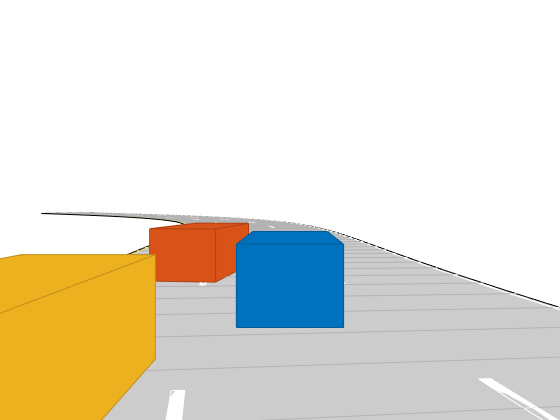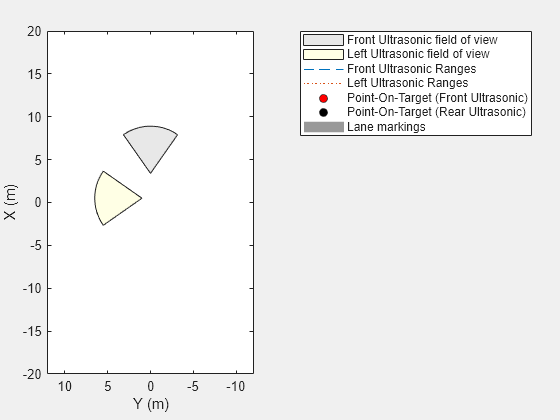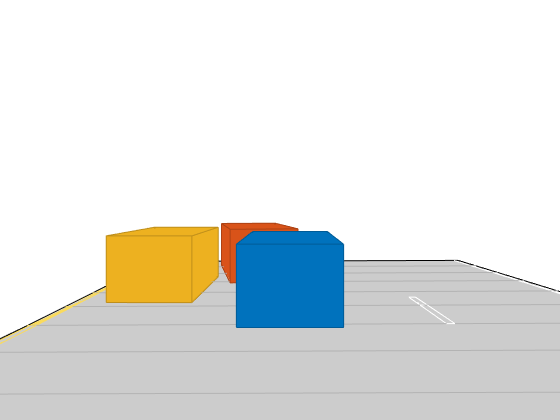ultrasonicDetectionGenerator
Generate ultrasonic range detections in driving scenario or RoadRunner Scenario
Since R2022a
Description
The ultrasonicDetectionGenerator
System object™ generates detections from an ultrasonic sensor mounted on an ego vehicle. The
detections are range measurements that indicate the distance between the sensor and the
closest point of the detected object. You can use an ultrasonicDetectionGenerator object in a scenario containing actors and
trajectories, which you can create by using a drivingScenario object.
You can also use the ultrasonicDetectionGenerator object with vehicle actors in RoadRunner Scenario simulation. First you must create a SensorSimulation object to interface sensors with RoadRunner Scenario, and then register the sensor model using the addSensors object function before simulation.
To generate ultrasonic detections:
Create the
ultrasonicDetectionGeneratorobject and set its properties.Call the object with arguments, as if it were a function.
To learn more about how System objects work, see What Are System Objects?
Creation
Syntax
Description
ultrasonic = ultrasonicDetectionGeneratorultrasonicDetectionGenerator object with
default property values to generate range detections for a simulated ultrasonic
sensor.
ultrasonic = ultrasonicDetectionGenerator(id)SensorIndex property to id.
ultrasonic = ultrasonicDetectionGenerator(___,Name=Value)ultrasonicDetectionGenerator(MountingLocation=[1 0 0.5],MountingAngles=[0 0
pi/20]) specifies the mounting location and angle of the ultrasonic sensor on
the ego vehicle.
Properties
Usage
Description
[
also returns a logical value, dets,isValidTime] = ultrasonic(targets,simTime)isValidTime, indicating whether
simTime is a valid time for generating detections. If
simTime is an integer multiple of the reciprocal of the UpdateRate property value, then isValidTime is
1 (true).
Input Arguments
Output Arguments
Object Functions
To use an object function, specify the
System object as the first input argument. For
example, to release system resources of a System object named obj, use
this syntax:
release(obj)
Examples
Version History
Introduced in R2022a
See Also
Objects
objectDetection|drivingScenario|drivingRadarDataGenerator|visionDetectionGenerator|lidarPointCloudGenerator|insSensor



